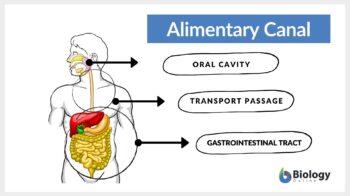
Alimentary canal
n.,
[ˈa.lɪ.mən.təɹ.i kəˈnæl]
A tubular structure of muscle and mucous membrane lining that begins at the mouth and ends at the anus

Alimentary canal
n.,
[ˈa.lɪ.mən.təɹ.i kəˈnæl]
A tubular structure of muscle and mucous membrane lining that begins at the mouth and ends at the anus